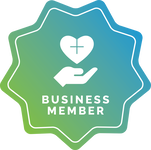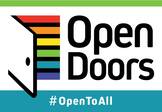|
Your tax refund may come later this year.
#whatthefox is right! If you frequent the IRS.gov virtual newsroom (like we do), you’ll discover these facts: “The Internal Revenue Service announced that the nation's tax season will start on Friday, February 12, 2021, when the tax agency will begin accepting and processing 2020 tax year returns. The February 12 start date for individual tax return filers allows the IRS time to do additional programming and testing of IRS systems following the December 27 tax law changes that provided a second round of Economic Impact Payments and other benefits.” Although shocking and unprecedented, the IRS has reason (outlined in this full article): to make sure people eligible for stimulus money, receive those funds before filing their taxes. That’s nice - we’ll let them slide this year. We encourage you to read the IRS’s latest news release for simple steps to speed your refund and a full list of key filing season dates. As we’ve said before, our team at Blue Fox is up to speed on the latest tax law changes, and there are a lot. As you can imagine, tax preparation has never been more complex or intricate as it will be in 2021. If you could use tax support, let’s chat! We serve individuals, self-employed folks, nonprofit organizations, and small businesses.
0 Comments
Here’s Why Cash is King for Your Nonprofit During the 2020/2021 Economic CrisisIn our latest blog post, [Chills, Thrills, and Dollar Bill, Part 1] we talked about what a cash flow is, and why it's important for your nonprofit. Now let's dive deeper into 12 ways to steward your organization’s position during tough times.
Revenue Automate earned revenue whenever possible. If you’re collecting fees from individuals for a service, you should be automating that process! Why? It’s key to keeping your cash flow level.
Don’t expect pre-2020 levels of institutional funding to return for a while. Word on the street is not to expect grant funding to return to normal in 2021. Understand that your development team’s attention might be better spent on cultivating other sources of revenue besides grants. Now is the time to try new things. Innovate, test, adapt, test and repeat! Most organizations have some room to deliver an earned revenue model to their constituents. You can no longer afford to wait to diversify your funding streams. Expenses Analyze expenses but don’t analyze to death. What matters is how you deliver on mission. Don’t get analysis paralysis. Know your major buckets of expenses and be prepared to make strategic spending decisions. Know the difference between ROI (return on investment) and ROS (return on scarcity). ROS is a really interesting way to say opportunity cost. Scarcity is a lack of something; nonprofits often suffer from a “scarcity mindset.” So as you look at your spending, consider: if you choose not to fund certain activities due to concerns around scarcity, what opportunities are being lost as a result? Are you eliminating something from your budget that results in a negative impact to your mission? Protect Your Cash on Hand. The following tips might seem a little obvious or like a “Risk Management 101” but they are great reminders. Pay down credit card debt. Organizational credit card debt can really hamstring your ability to save for the future. Wherever possible, if cash allows, pay down your credit cards to avoid paying overly high interest rates. Obtain line of credit. If you already have a line of credit, KUDOS! But use cautiously. Remember it's a loan you have to pay it back. Right now we're seeing some lending happening at the community bank and credit unions level, but the larger banks are not being so generous. If you can obtain a line of credit, even if it’s small, that could help you get by. Determine when to use EIDL funds. If you took an Economic Injury Disaster Loan in 2020, proceed with caution. Think of your EIDL money as an internal line of credit. Sit on the money as long as you can and see if you need it. If you’re going to draw on it, have a plan for how you will repay the funds. EIDL funds are still loans. So you and your board should tap into those funds carefully. Understand FDIC insurance limits on bank accounts. The Federal Government ensures up to $250,000 in bank accounts, so if your organization has more than that in any single bank account, the balance is unprotected. If you want to mitigate that risk, talk to your bank about where you can move your funds to be protected. Manage risk to investments; focus on capital preservation. You might have already done this in 2020 but talk to your investment advisors and find out more about your asset allocation and the risk exposure for your organization’s investments. Pro tip: Keep your board in the loop-they have ultimate fiduciary responsibility for your nonprofit. They are on the hook financially and legally, so make sure your board is on board at all times. To quote Yogi Berra, “if you don’t know where you are going, you might wind up someplace else.” A keen eye on cash will help you manage your organization more effectively and it will also help your board, leadership and constituents know that you are prepared to move your organization forward regardless of the crazy times we’re living in now. If you’re looking to dive deeper into planning your 2021 budget and cash flow, our friendly team at Blue Fox is here to help! Give us a call at (321) 233-3311 or email us at [email protected]. We’ll get you sorted! Then you can focus on what really matters: your mission and serving your community. You can also schedule a free budget consultation: https://calendly.com/chat-with-chantal Here’s Why Cash is King for Your Nonprofit During the 2020/2021 Economic CrisisThe Benjamins. That bankroll. Can you tell we’re talking about CASH? Keeping a keen eye on cash flow goes hand-in-hand with creating a meaningful budget for your organization. [Shameless plug, check out our blog post on How to Create a Fairly Meaningful Budget for 2021]
Our CEO, Chantal Sheehan, at Blue Fox recently spoke on the topic of how cash is king at Nonprofit Hub’s Cause Camp conference in October. Her urgent advice to nonprofits is to pay special attention to cash flow specifically during this economic downturn in order to survive. Why? A cash flow forecast is a projection that shows the strength of your cash position over time. Because a projection like this shows you where you’re going to be in 6, 9, 12, or 24 months from a pure cash standpoint, we feel it’s a nonnegotiable tool. So what does a cash flow forecast look like? The good news is that they aren’t that hard to build most of the time! We typically build our forecasts out in a spreadsheet. Rows detail cash inflows and outflows, and columns list out each month in the period you’re forecasting. So imagine: your current cash position (i.e. balances of all your cash/bank accounts) is at the very top. Then cash inflows (revenue, receipts from invoices, investment income, etc) follow. Finally, your outflows (i.e. expenses, debt payments, capital purchases) are listed at the bottom. For example, say you start with $100,000 in the bank, then you make $50,000 in Month 1, while you spend $25,000 in the same t month. Your cash position at the end of Month 1 would = $125,000. ($100,000 + $50,000 - $25,000) So your cash flow forecast shows you where you started, what money you took in and what went out. This type of projection is extremely useful when built out for 12 months or longer. Pro tip: The most financially stable and sustainable organizations pay attention to cash flow because they know it affects everything from their events to payroll.. Now that we’ve covered the importance of cash flow, we're going to dive deeper in our part 2 of this series and cover 12 ways to steward your organization’s position during tough times. In the mean time, if you’re looking to dive deeper into planning your 2021 budget and cash flow, our friendly team at Blue Fox is here to help! Give us a call at (321) 233-3311 or email us at [email protected]. We’ll get you sorted! Then you can focus on what really matters: your mission and serving your community. You can also schedule a free budget consultation: https://calendly.com/chat-with-chantal As you read, remember that our team at Blue Fox is happy to answer questions, provide assistance with PPP applications and forgiveness, and help your organization navigate the pandemic’s financial challenges.On December 21st, the U.S. Senate and House of Representatives passed the $900 billion COVID-19 relief bill: Consolidated Appropriations Act, 2021. [Warning: it’s 5,593 pages… speed readers only!]
So, what does it mean for you? Here is a brief recap of the key takeaways, as summarized by the Journal of Accountancy. (Yes, we summarized a summary, just for you.) Key takeaways for individuals and self-employed: The Bill:
Key takeaways for small business, nonprofits, not-for-profits: The Bill:
Simplified Application The new COVID-19 relief bill also:
For more details read: COVID-19 relief bill addresses key PPP issues by Journal of Accountancy or visit U.S. Small Business Association PPP Resource Page. Or, Just Ask Blue Fox For Help! Our team is happy to answer questions, provide assistance with PPP applications and forgiveness, and help your organization navigate the pandemic’s financial challenges. Give us a call at (321) 233-3311, schedule a phone call, or email [email protected]. |
Our BlogWelcome to the Blue Fox Blog! A fairly entertaining source of info and news related to our company, nonprofits, social sector trends, and, of course, accounting. Enjoy! Top ArticlesBack to Basics: How to Set Up Your Nonprofit Chart of Accounts
How "Small" Payroll Mistakes Cause Multi-Year S#!t Storms for Nonprofits Behind the Scenes, New Client Onboarding Call When to Hire a Tax Professional - 10 Factors to Consider 40+ Ideas to Light a Fundraising Fire Under Your Nonprofit Board Members Why Outsource Your Nonprofit Accounting to Blue Fox? Ask One of Our Newest Clients Client CASE STUDY: One of The Most Financially Sustainable Nonprofit Orgs We Know The Magical Nonprofit Financial Ratio Matrix 10 Reasons to Outsource Your Nonprofit Accounting How to Make Your Nonprofit Recession-Proof How to Engage Your Board of Directors in Financial Conversations QB Tip of the Month: How to Use Classes for Painless Grant Writing When to Hire an Accountant for Your Social Impact Org Are You Paying Too Much for Payroll? Company NewsBlue Fox Teams Up With Bloomerang to Develop Nonprofit Resources
Blue Fox Earns Better Business Bureau Accreditation Blue Fox Launches Protected By Logo Blue Fox - The Origin Story Categories
All
Archives
July 2024
|
BLUE FOX
Phone: (321) 233-3311, Email: [email protected]
Mailing Address: 2542 Woodfield Circle, Melbourne, FL 32904
Copyright © 2024 - All Rights Reserved
Holiday office closures: To give our employees time to unplug and refresh with their family and friends, the Blue Fox virtual office closes
for all federal holidays, the week of Thanksgiving, and the week between Christmas and New Year's Day.
Phone: (321) 233-3311, Email: [email protected]
Mailing Address: 2542 Woodfield Circle, Melbourne, FL 32904
Copyright © 2024 - All Rights Reserved
Holiday office closures: To give our employees time to unplug and refresh with their family and friends, the Blue Fox virtual office closes
for all federal holidays, the week of Thanksgiving, and the week between Christmas and New Year's Day.





 RSS Feed
RSS Feed









